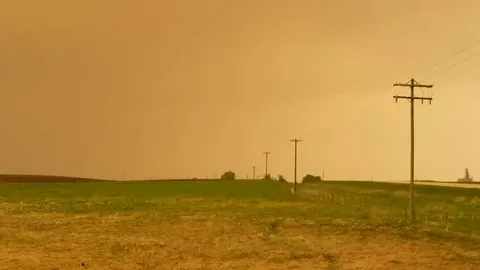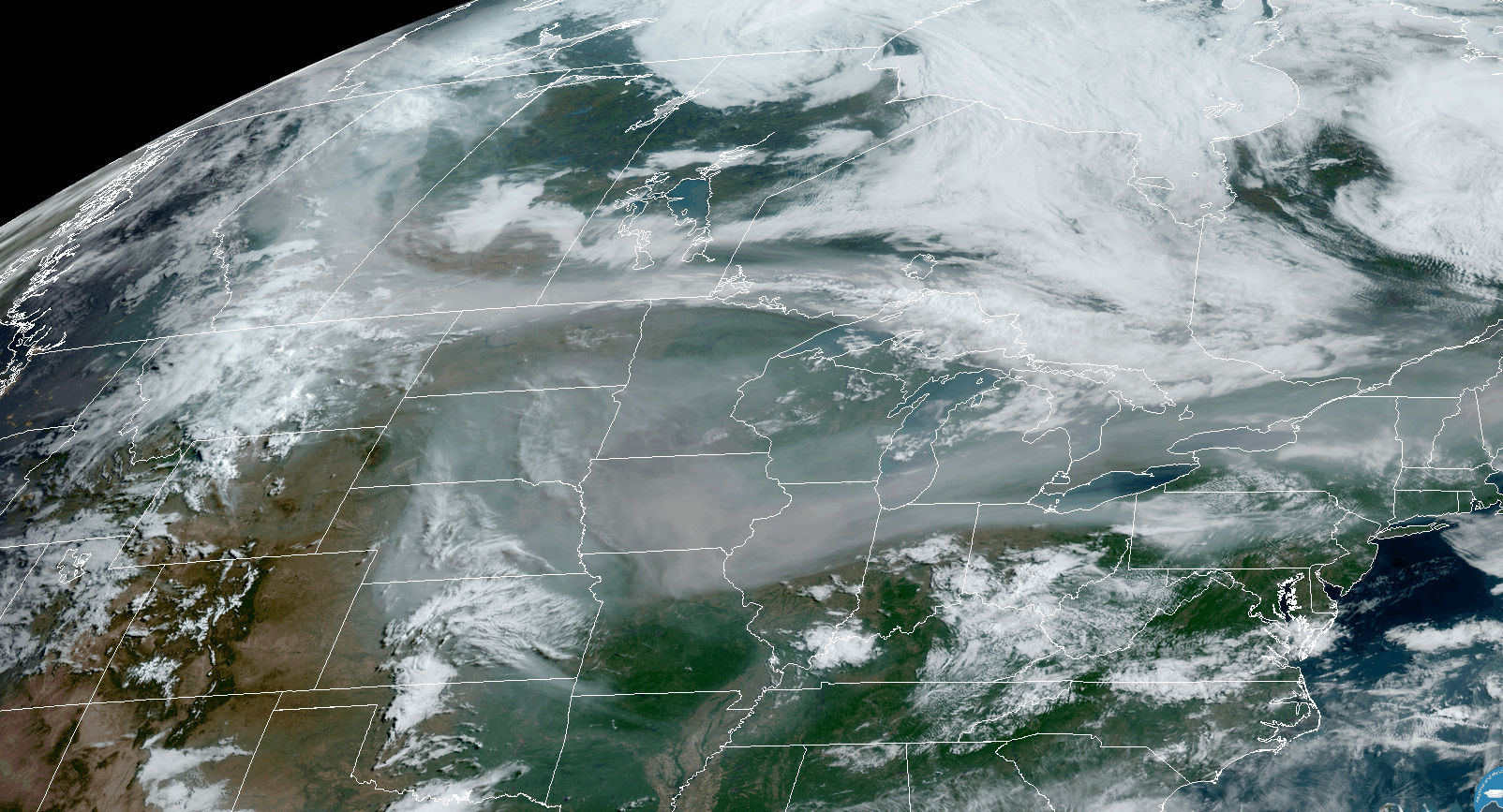
Wildfires have Canadians seeing red at sunrise
Wildfires raging in northern Alberta are making their presence felt across a broad swath of the country, turning skies hazy as far away as southern Ontario on Friday morning.
With more than 350,000 hectares in northern Alberta consumed so far it's not surprising that the amount of smoke in the air is having a major impact on both air quality and visibility across even southern Alberta.
Summer revealed! Visit our Complete Guide to Summer 2019 for an in depth look at the Summer Forecast, tips to plan for it and much more
In the image below, you can see the extent of the smoke across Alberta and the southern Prairies, stretching all the way through the U.S. Midwest, Great Lakes region, and on to New England. Smoke appears on the visible satellite as a soft grey haze and stands out from the sharper white of cumulus clouds.

The result? A yellowish haze that gives the sun a dull red look, especially at sunrise and sunset, as shared by people on social media from Edmonton to Toronto.
RELATED: Can wildfire smoke impact your allergies?
WHY IS THE SKY BLUE? OR YELLOW? OR RED?
The way light moves through our atmosphere is responsible for the shift in colour. We enjoy Earth's blue sky thanks to an effect known as Rayleigh scattering.
The Sun's light is white but when it shines through the atmosphere that white light interacts with the molecules that make up our air. Blue light has the shortest wavelength, and has the hardest time getting past these molecules without bumping into them -- it gets scattered the most easily. Longer wavelenghts, like red light, have an easier time of it, until you add larger particles -- like smoke -- to the equation. Those bigger particles are much better at scattering the longer wavelengths of yellow and orange, giving the smoky sky its distinctive apocalpytic tint.
Sunrises and sunsets are generally already reddish here on Earth because when the sun is at a lower angle in the sky, its rays have to travel through a thicker slice of the atmosphere to reach us, allowing the light to be better scattered even without larger particles like smoke.
While we might be the only planet in the solar system with wildfires (at least, at the moment), we aren't the only ones with a blue sky -- or maybe even a red one.
Mars's weak atmosphere makes the sky look dull white when you look straight up, but a bluish tint appears closer to the horizon, thanks to the same process that gives us our red sunrises and sunsets.
Titan, Saturn's largest moon', has a dense atmosphere that makes it entirely possible that The Sun always appears as a red disc in the sky (albeit a much smaller red disc than what we're used to here at home.)





